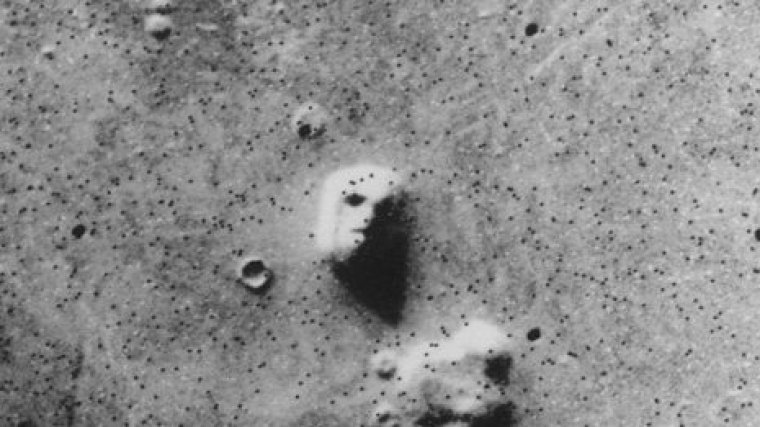| Health / Health News |
Oxytocin affects facial recognition
NIH | MAY 28, 2014
A genetic variation in the receptor for oxytocin, a hormone involved in social bonding, affects the ability to remember faces in families with a child who has autism. The finding points the way to a better understanding of oxytocin’s role in social behavior.

Many people see a "face" in this satellite image of the Cydonia region on Mars, due to the human ability to perceive faces even in inanimate objects, a phenomenon known as pareidolia. Photo Credit: NASA.
Animals that live in social groups need to be able to recognize individuals from their own species. Rodents and many others rely on smells or pheromones to identify each other. Humans and other primates rely more on sights and sounds. Evidence has been building that the hormones oxytocin and vasopressin are involved in social recognition. Studies in mice, for example, show that oxytocin receptors are essential for recognizing individuals.
The ability to remember faces varies among people, and these differences are partly heritable. Researchers from Emory University, University College London, and the University of Tampere in Finland explored whether variations in the genes for oxytocin and vasopressin receptors play a role.
The scientists analyzed 198 families from the United Kingdom and Finland in which a single child had been diagnosed with autism spectrum disorder (ASD). Included in the study were 153 nonautistic siblings and 311 parents (178 mothers and 133 fathers), none of whom had significant autistic traits. The scientists chose such families because of their wide variation in face recognition memory and other social skills.
The researchers first created unique standardized “growth charts” from general population data for 3 social characteristics that are often impaired in people with ASD: face recognition memory, gaze fixation, and facial emotion recognition. These charts allowed the team to derive and assign standardized scores for these skills to all the participants, regardless of age or gender.
The children with ASD scored lower on each skill than did either of their parents or siblings. The scientists next searched for associations between test performance and variations in the vasopressin receptor (AVPR1a) and oxytocin receptor (OXTR) genes.
The analysis revealed a single genetic variation in the oxytocin receptor that was strongly associated with facial recognition memory. The researchers estimate that this variation accounted for 2% to 10% of the test performance variance in both groups studied.
Although rodents and primates rely on different sensory cues to recognize each other, the same gene appears to be involved in processing that social information. The researchers are now working to manipulate the oxytocin system to further explore how it affects social cue processing. This information may be useful for developing approaches to improve social cognition in people with autism.
YOU MAY ALSO LIKE



